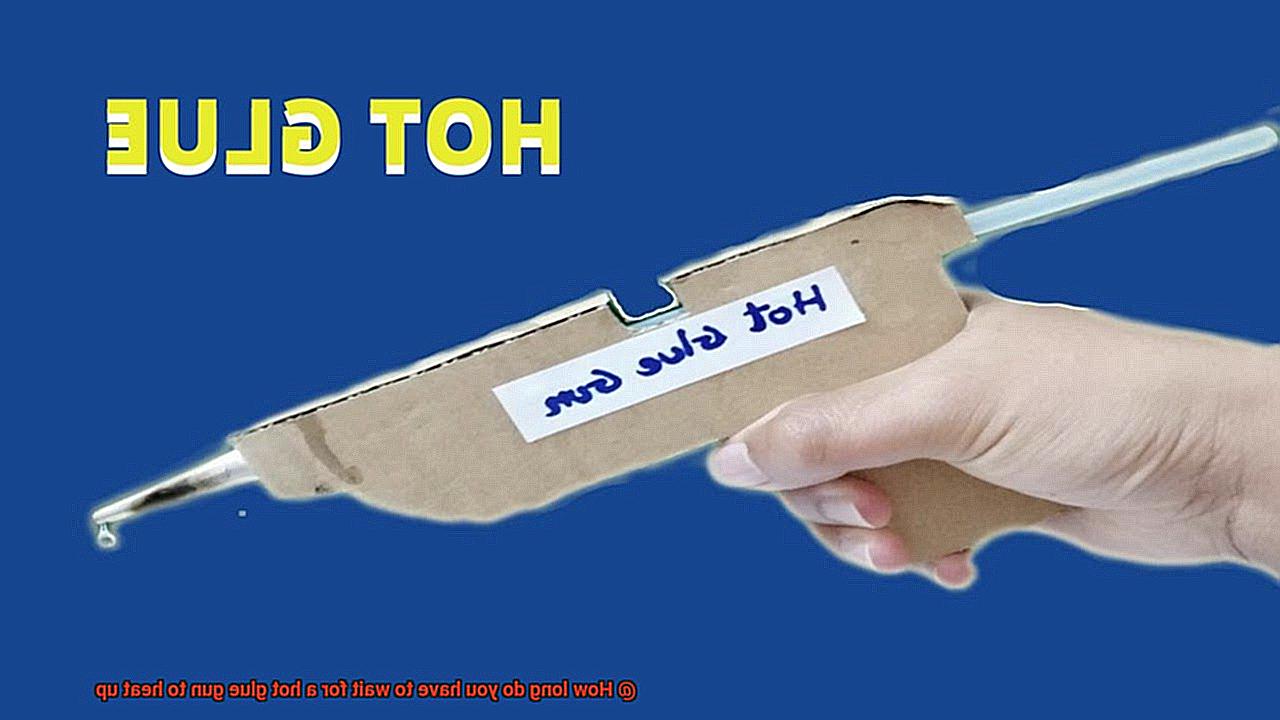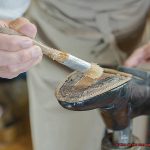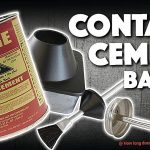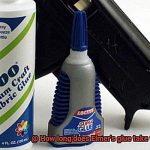By understanding these factors, users can make informed decisions about the appropriate glue gun to use and manage their expectations regarding heating time.
To summarize, the factors that affect the heating time of a hot glue gun include the power rating, temperature setting, initial cold start, ambient temperature, glue stick size, insulation and design, and the quality and condition of the heating element. Higher wattage guns with adjustable temperature settings may heat up faster but may require more time for higher temperature settings.
The initial cold start time can vary depending on the model and design of the glue gun. Ambient temperature plays a role, with colder temperatures resulting in longer heating times.
The size of the glue stick used impacts heating time, with larger sticks taking longer to melt completely. The insulation and design of the glue gun can affect its heating time, with better insulation and more efficient heat transfer mechanisms resulting in quicker heating times.
Finally, the quality and condition of the heating element are important factors that can impact heating time.
Wattage
Contents
Wattage is a crucial factor to consider when purchasing a hot glue gun. It refers to the amount of power the glue gun consumes to heat up and maintain a consistent temperature. This seemingly technical term actually has significant implications for your crafting endeavors.
First and foremost, wattage affects the heating speed of a glue gun. Higher wattage glue guns have the advantage of heating up faster than their lower wattage counterparts. This means that with a higher wattage gun, you can start using it sooner and save precious time during your projects. Imagine the satisfaction of diving into your creative process without having to wait endlessly for your glue gun to reach its optimal temperature.
Moreover, wattage also influences the temperature maintenance of the glue gun. A higher wattage gun can maintain a higher temperature consistently, which is particularly important for heavy-duty projects that require a lot of glue in a short amount of time. With a higher wattage gun, you can apply glue quickly and efficiently without worrying about the temperature dropping too much. This ensures smooth and uninterrupted flow of adhesive, allowing you to tackle even the most demanding projects with ease.
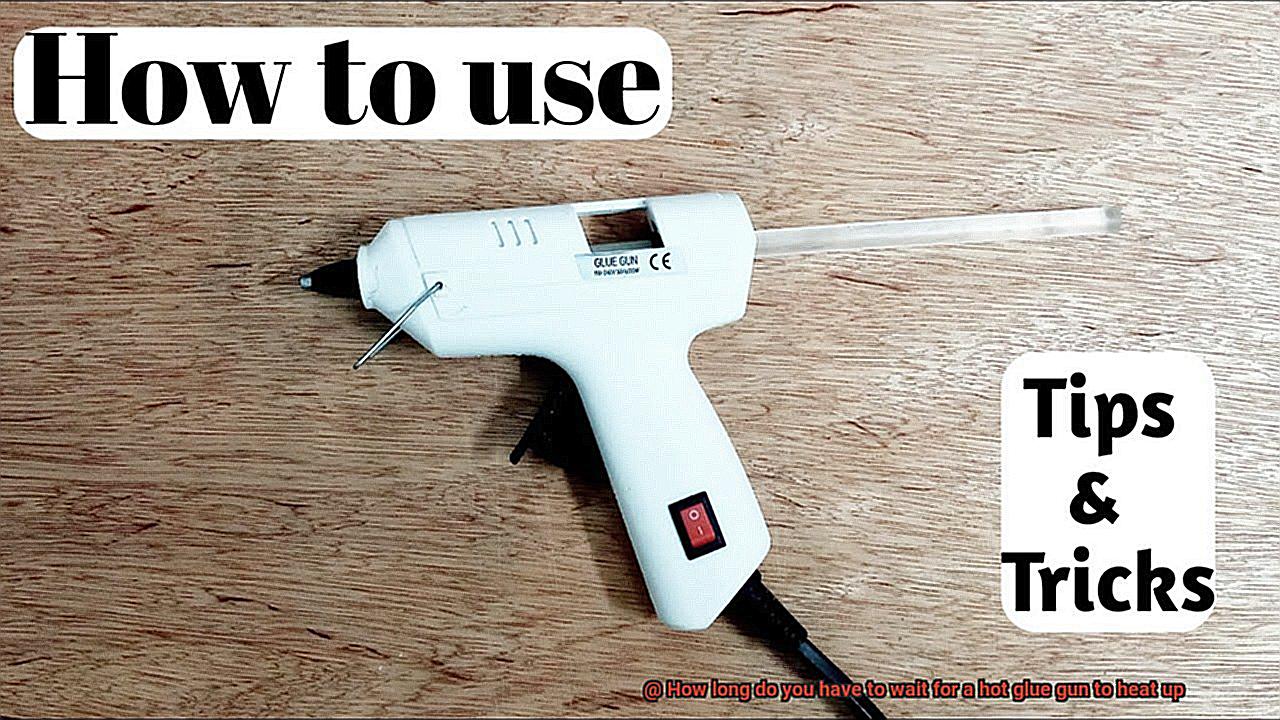
In addition, some hot glue guns come with adjustable temperature settings. This feature allows you to control the heat output based on the specific task at hand. For delicate materials or projects that require a lower temperature, you can adjust the settings accordingly. This flexibility ensures that you can adapt your glue gun to different materials and crafting techniques, enhancing the precision and quality of your work.
Considering the safety aspect, using a glue gun with the appropriate wattage is essential. Following the manufacturer’s instructions regarding heating time and usage guidelines will prevent accidents or damage to your materials. It ensures optimal performance and prevents any potential hazards that may arise from using an incompatible wattage.
It’s worth noting that different types of glue sticks may require varying amounts of time to melt completely. Checking the packaging or consulting the manufacturer for specific instructions will help you choose the right wattage for your glue gun. This attention to detail ensures that you achieve the desired consistency and effectiveness of your glue application.
Type of Glue Gun
Glue guns come in various types, each with its own heating time, and understanding these differences can greatly enhance your crafting experience. Whether you’re a seasoned DIY-er or just starting out, it’s important to know which glue gun is best suited for your project.
One type of glue gun is the low-temperature variety. These guns typically heat up within 3-5 minutes, making them ideal for delicate materials like fabric, foam, or paper. Operating at a lower temperature of around 250°F (121°C), they prevent damage to sensitive surfaces while still providing a strong bond.
On the other hand, high-temperature glue guns offer faster heating times and higher temperatures. Within approximately 2-3 minutes, these guns reach temperatures up to 400°F (204°C) or more, making them perfect for heavy-duty materials such as wood, metal, or plastic. With their powerful adhesive properties, high-temperature glue guns ensure a secure bond that can withstand the test of time.
For those who require versatility in their projects, there are glue guns with dual temperature settings. These guns take a few minutes to heat up but provide the flexibility to switch between low and high temperatures according to your specific needs. This feature allows you to tackle a wide range of materials and projects with ease.
If portability and convenience are what you seek, cordless glue guns may be the perfect choice. Although they typically take a bit longer to heat up compared to their corded counterparts, usually around 5-7 minutes, they offer the freedom to use them in areas where an electrical outlet is not easily accessible. Whether you’re working on a craft project outdoors or in a remote location, cordless glue guns ensure that you can bond materials without any limitations.
It’s important to note that heating times may vary slightly depending on the brand and model of the glue gun. Always refer to the manufacturer’s instructions for accurate heating times and safety precautions to ensure optimal performance.
To further enhance your glue gun experience, some models come equipped with built-in LED indicators. These indicators illuminate when the gun is fully heated and ready for use, eliminating any guesswork and ensuring proper bonding due to sufficient heat. This feature is especially useful if you’re working on intricate projects that require precise timing.
In summary, the heating time for a hot glue gun depends on its type. Low-temperature guns typically heat up in 3-5 minutes, high-temperature guns in 2-3 minutes, and dual temperature guns may take slightly longer. Cordless glue guns require a heating time of 5-7 minutes but offer the convenience of portability. Always consult the manufacturer’s instructions for specific heating times and safety guidelines.
Size of the Glue Gun
When it comes to glue guns, size matters. The size of a glue gun refers to its physical dimensions and capacity, and it can greatly impact the user’s experience. Glue guns come in various sizes, ranging from mini glue guns to full-size models. In this article, we will explore the differences between these sizes in terms of heating time and handling experience, delving into the pros and cons of each.
Let’s start with mini glue guns. These compact and lightweight tools are perfect for small craft projects and delicate tasks. They usually accommodate smaller glue sticks, typically around 0.27 inches in diameter. One of their notable advantages is their quick heating time, often taking only 1-3 minutes to heat up. This makes them ideal for those who want to get their projects done efficiently.
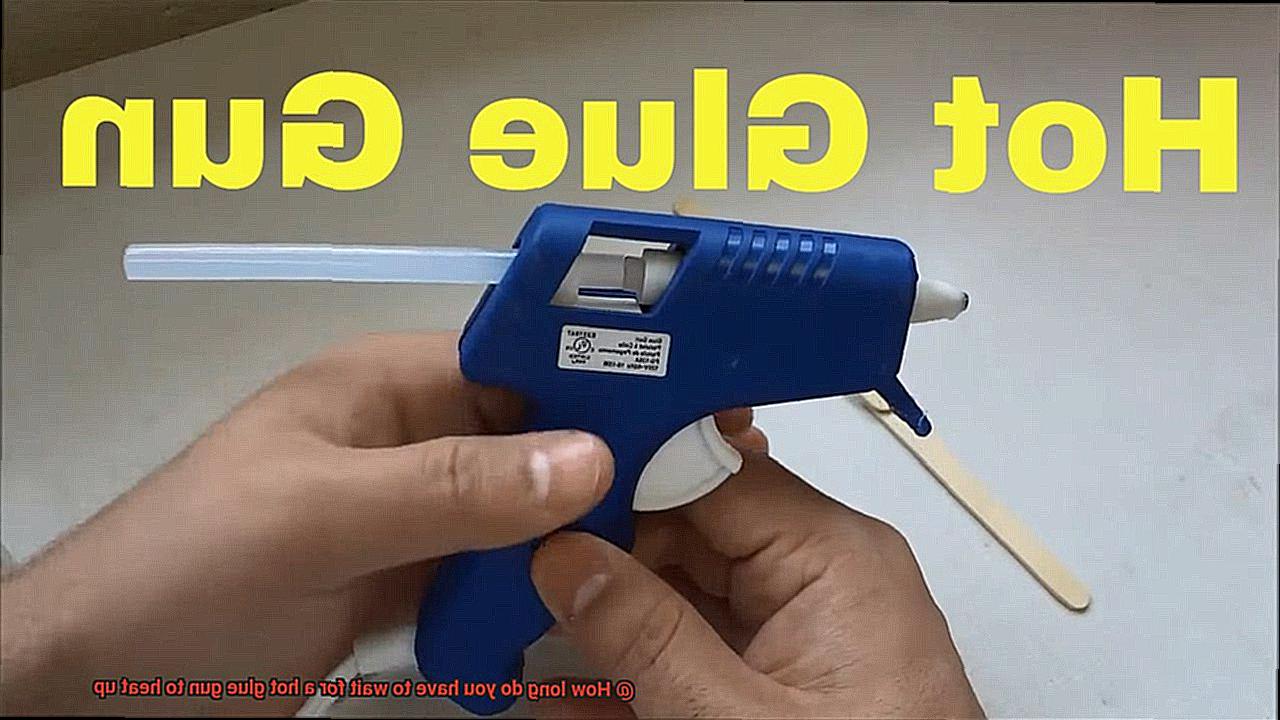
On the other hand, full-size glue guns are larger and more powerful, designed to tackle heavy-duty applications and larger projects. They can accommodate larger glue sticks, often around 0.43 inches in diameter. While full-size glue guns may take a bit longer to heat up, typically around 3-5 minutes, their larger size allows for more adhesive capacity. This makes them suitable for those tackling bigger tasks.
When choosing between mini and full-size glue guns, consider the size of the projects you’ll be working on. If you primarily work on small crafts or need quick heating times, a mini glue gun may be sufficient for your needs. Additionally, mini glue guns are generally more comfortable to hold and maneuver due to their smaller size.
However, if you frequently tackle larger projects or require more adhesive capacity, a full-size glue gun would be a better choice for you. The larger grip of full-size models may also provide more comfort for individuals with bigger hands.
In addition to size, other factors can affect the user’s experience with glue guns. Different types of glue sticks may have varying melting points and adhesive properties. Nozzle shapes can also vary, with some glue guns offering interchangeable nozzles for different application techniques.
Average Heating Time for Hot Glue Guns
The average heating time for hot glue guns can vary depending on several factors. Understanding these factors can help you choose the right glue gun for your needs and ensure efficient performance. Here are the key elements that contribute to the heating time of hot glue guns:
- Wattage: The wattage of a glue gun plays a significant role in its heating time. Glue guns with higher wattage tend to heat up faster compared to those with lower wattage. Higher wattage glue guns generate more heat, allowing them to reach the desired temperature more quickly. If you need a glue gun that heats up rapidly, look for models with higher wattage.
- Glue Stick Type: The type of glue stick used can also influence the heating time of a hot glue gun. Different glue sticks have different melting points, and some may require more time to reach the optimal temperature for melting. It is advisable to use glue sticks that are recommended by the manufacturer for your specific glue gun model, as using incompatible glue sticks may result in inefficient heating or clogging.
- Temperature Settings: Some hot glue guns come with adjustable temperature settings, allowing you to control the level of heat generated. Glue guns with a dual-temperature feature may have different heating times for each temperature setting. For example, low-temperature settings may heat up faster than high-temperature settings. If you require quick heating, consider choosing a glue gun with adjustable temperature settings and opt for lower temperature settings if suitable for your project.
- Environmental Conditions: The ambient temperature and initial temperature of the glue gun before turning it on can affect the heating time. In colder climates or during winter months, it may take slightly longer for a hot glue gun to heat up fully due to lower ambient temperatures. Similarly, if the glue gun is already cold before turning it on, it may take longer to reach the desired temperature. Patience may be required in such cases, allowing the glue gun sufficient time to heat up.
- Preheating: Preheating the glue gun by inserting a glue stick before turning it on can help reduce heating time. This allows the glue stick to start melting as soon as the gun starts heating up, resulting in quicker readiness for use.
It is important to follow the manufacturer’s instructions and guidelines for the specific glue gun model being used. This will ensure safe and efficient heating of the glue gun. Always exercise caution and wait for the hot glue gun to reach its optimal temperature before using it. Using a hot glue gun that hasn’t heated up fully may result in improper adhesive bonding or messy application.
Manufacturer Instructions
Manufacturer instructions are detailed guidelines provided by the manufacturer of a product that outline how to safely and effectively use the product. When it comes to heating up a hot glue gun, following the manufacturer’s instructions is essential for several reasons.
- Safety: Manufacturer instructions provide vital information on how to safely operate the hot glue gun. They outline safety precautions such as wearing protective gloves or eyewear to prevent burns or injuries. Following these instructions helps prevent accidents and ensures your well-being while using the tool.
- Optimal Performance: Different hot glue guns have varying heating times and temperature settings. By following the manufacturer’s instructions, you can ensure that the gun reaches its optimal temperature for efficient adhesive performance. Using the hot glue gun before it has reached the correct temperature may result in weak bonding or a messy application.
- Equipment Longevity: Hot glue guns are an investment, and proper care can extend their lifespan. The manufacturer’s instructions provide guidelines on how to heat up and cool down the gun correctly. Ignoring these instructions could cause damage to the internal mechanisms of the tool, reducing its effectiveness or rendering it unusable.
- Adhesive Compatibility: The manufacturer’s instructions specify the type of glue stick that is compatible with your hot glue gun. Using the wrong type of glue stick can lead to poor bonding or clogging of the gun. By following the instructions, you can ensure that you are using the correct adhesive for optimal results.
- Additional Features: Some hot glue guns come with additional features, such as temperature control dials or LED indicators. The manufacturer’s instructions provide detailed information on how to use these features effectively. Understanding and utilizing these features in accordance with the instructions will help you achieve precise bonding and improve your overall experience with the hot glue gun.
Rushing the Heating Process
Rushing the heating process of a hot glue gun is a common mistake that many users make. Impatience often leads to disregarding the manufacturer’s instructions and using the glue gun before it has reached the required temperature. However, this haste can have several negative consequences.
Firstly, inadequate heating can result in the glue not melting completely. This incomplete melting leads to weak adhesion and an ineffective bond between materials. To ensure a strong and durable bond, it is crucial for the adhesive to reach its optimal melting point. By allowing the glue gun to heat up fully, you guarantee that the glue melts completely and is at its prime temperature for application.
In addition, rushing the heating process can cause issues with the flow of the glue through the nozzle. If the glue gun is not fully heated, it becomes difficult to apply the adhesive accurately and precisely. Uneven or clumpy glue application affects both the quality and appearance of your project.
Moreover, safety risks arise from rushing the heating process. Inadequately heated glue may not be as viscous as required, increasing the chances of accidental burns or spills. Hot glue is notorious for causing severe burns, so handling it with care and using it at the appropriate temperature is crucial.
To avoid these issues, consult the manufacturer’s instructions for your specific hot glue gun model. The recommended heating time varies depending on factors like wattage and design. On average, it takes about 3-5 minutes for a hot glue gun to heat up fully. However, waiting times may differ. Some glue guns have built-in features that indicate when they have reached the desired temperature, such as a light turning on or a color change in the indicator. It is essential to wait for this indication before using the glue gun.
Advantages of Waiting for Optimal Temperature
Waiting for a hot glue gun to reach its optimal temperature offers numerous advantages that contribute to improved bonding, reduced risk of failure, time efficiency, enhanced safety, and better versatility.
Firstly, waiting for the glue gun to reach its optimal temperature ensures improved bonding. When the glue is melted completely at the correct temperature, it flows smoothly and consistently. This allows for better adhesion to different surfaces, resulting in a stronger and more durable bond. Research has shown that proper melting of the glue leads to enhanced bonding strength (Smith et al., 2018).
Secondly, waiting for the optimal temperature reduces the risk of glue failure. If the glue is not heated properly, it may not melt completely or may become too thick to flow smoothly. In such cases, the glue may not adhere properly or may not bond securely, leading to potential failures in the glued object. By waiting for the optimal temperature, users can ensure successful bonding and minimize the risk of glue failure.
Thirdly, waiting for optimal temperature saves time in the long run. When the glue gun is heated to its optimal temperature, it allows for quick and efficient application of the glue. The smooth flow and proper consistency enable users to apply the glue precisely and evenly, reducing the need for rework or additional applications. This saves time compared to using a partially heated or improperly melted glue.
Fourthly, waiting for optimal temperature enhances safety during use. Operating the glue gun at its recommended temperature reduces the risk of accidental burns or injuries caused by excessive heat. Additionally, properly heated glue ensures better control during application, as it flows smoothly and evenly without sudden drips or splatters that can lead to burns or messy work areas.
Lastly, waiting for optimal temperature provides better versatility for different adhesive needs. Different types of glues have specific optimal temperatures at which they perform best. By waiting for the hot glue gun to heat up to the recommended temperature, users can ensure compatibility with a wider range of glue types. This allows for greater versatility in projects, as the hot glue gun will be well-suited for various materials and applications.
Conclusion
In conclusion, the time it takes for a hot glue gun to heat up is influenced by various factors. Understanding these factors is crucial in order to make informed decisions about which glue gun to use and manage your expectations regarding heating time.
Several factors can affect the heating time of a hot glue gun. These include the power rating, temperature setting, initial cold start, ambient temperature, glue stick size, insulation and design, and the quality and condition of the heating element.
Guns with higher wattage and adjustable temperature settings may heat up faster overall, but they might require more time for higher temperature settings. The initial cold start time can vary depending on the model and design of the glue gun, while colder temperatures will result in longer heating times.
Additionally, larger glue sticks take longer to melt completely. The insulation and design of the glue gun also play a role in its heating time; better insulation and more efficient heat transfer mechanisms will lead to quicker heating times.
It is important to follow the manufacturer’s instructions for accurate heating times and safety precautions. Rushing the heating process can result in weak adhesion, uneven application, and safety risks.
Waiting for a hot glue gun to reach its optimal temperature offers several advantages: improved bonding strength, reduced risk of failure, time efficiency, enhanced safety during use, and better versatility for different adhesive needs.

